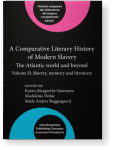Chapter 4
Commemorating slavery during apartheid
The hidden transcripts of the Cape Klopse carnival
This chapter aims to counter the dominant perception that an oral memory culture of slavery did not
exist in South Africa, due to repression by colonial authorities and the apartheid state. By focusing on the
intangible heritage of the South African slave past — in particular on the folk song and carnival tradition of the
so-called Cape Coloured community as performed during the apartheid period —
this chapter will discuss the memory strategies and hidden transcripts of commemoration, such as masking rituals and
the claiming of social sites, used by the descendants of the enslaved community at the Cape to perform their cultural
identity and commemorate their slave past in times of extreme oppression.
Article outline
- Forgotten voices at the Cape
- The Cape Klopse carnival: A Contested stage to commemorate and to protest
- Public performances and hidden transcripts: The Cape Klopse and the coloured masquerade
- Claiming a presence: Social sites of the hidden transcript
- Conclusion
- Author queries
-
Notes
-
References
This content is being prepared for publication; it may be subject to changes.
